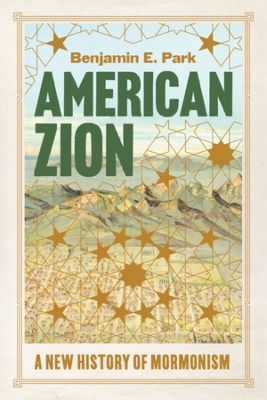
American Zion
A New History of Mormonism
Seiten
2025
WW Norton & Co (Verlag)
978-1-324-09668-9 (ISBN)
WW Norton & Co (Verlag)
978-1-324-09668-9 (ISBN)
The first major history of Mormonism in a decade, drawing on newly available sources to reveal a profoundly divided faith that has nevertheless shaped the nation
The Church of Jesus Christ of Latter-Day Saints was founded by Joseph Smith in 1830 in the so-called burned-over district of western New York, which seemed to produce seers and prophets daily. Most of the new creeds burnt out; Smith’s would endure. How Mormonism succeeded—and how it has fundamentally shaped American culture—is the story told by Benjamin Park in American Zion. While most prior accounts of the Mormons treat them as a monoculture existing outside the main currents of American life, Park is one of the first to demonstrate that Mormonism became central to American views of religious liberty and minority rights—and that Mormonism has been riven by deep internal divisions over gender, race and sexuality. An enthralling narrative account of the United States’ most important homegrown religion, American Zion will be seen as the definitive history of Mormonism for years to come.
The Church of Jesus Christ of Latter-Day Saints was founded by Joseph Smith in 1830 in the so-called burned-over district of western New York, which seemed to produce seers and prophets daily. Most of the new creeds burnt out; Smith’s would endure. How Mormonism succeeded—and how it has fundamentally shaped American culture—is the story told by Benjamin Park in American Zion. While most prior accounts of the Mormons treat them as a monoculture existing outside the main currents of American life, Park is one of the first to demonstrate that Mormonism became central to American views of religious liberty and minority rights—and that Mormonism has been riven by deep internal divisions over gender, race and sexuality. An enthralling narrative account of the United States’ most important homegrown religion, American Zion will be seen as the definitive history of Mormonism for years to come.
Benjamin E. Park is associate professor of history at Sam Houston State University. The author of American Nationalisms and Kingdom of Nauvoo, he has written for the Washington Post, Newsweek, and Houston Chronicle. He lives in Conroe, Texas.
| Erscheinungsdatum | 01.07.2025 |
|---|---|
| Zusatzinfo | 55 images |
| Verlagsort | New York |
| Sprache | englisch |
| Maße | 140 x 211 mm |
| Gewicht | 393 g |
| Themenwelt | Sachbuch/Ratgeber ► Geschichte / Politik ► Regional- / Landesgeschichte |
| Geisteswissenschaften ► Geschichte ► Regional- / Ländergeschichte | |
| Geisteswissenschaften ► Religion / Theologie ► Christentum | |
| ISBN-10 | 1-324-09668-3 / 1324096683 |
| ISBN-13 | 978-1-324-09668-9 / 9781324096689 |
| Zustand | Neuware |
| Informationen gemäß Produktsicherheitsverordnung (GPSR) | |
| Haben Sie eine Frage zum Produkt? |
Mehr entdecken
aus dem Bereich
aus dem Bereich
von der osmanischen Eroberung bis zur Gründung des Staates Israel
Buch | Softcover (2023)
C.H.Beck (Verlag)
CHF 26,50
Deutschlands schönste Ziele
Buch | Softcover (2024)
Belser Reise (Verlag)
CHF 33,90


